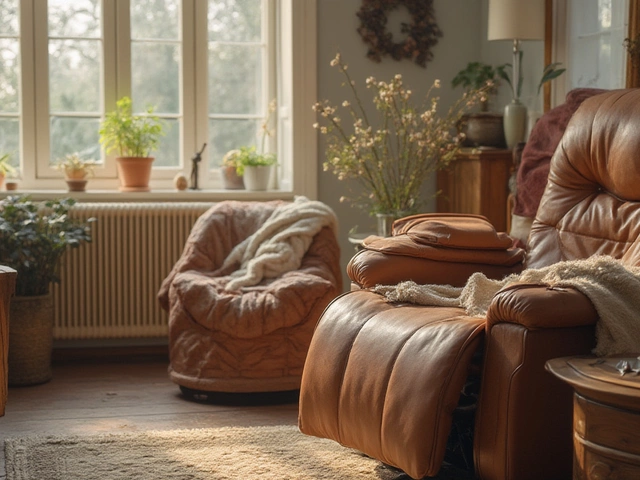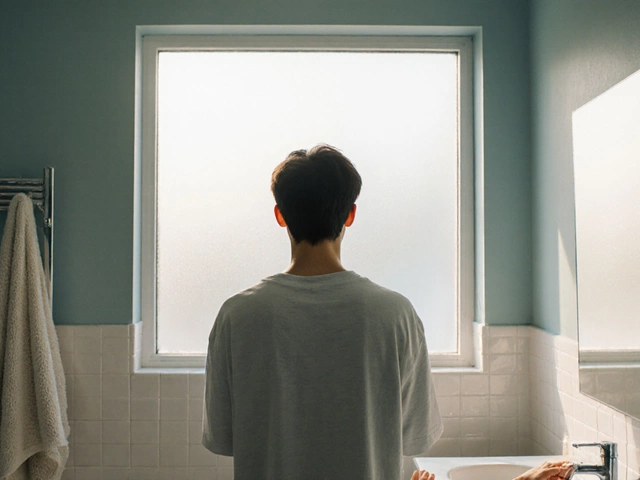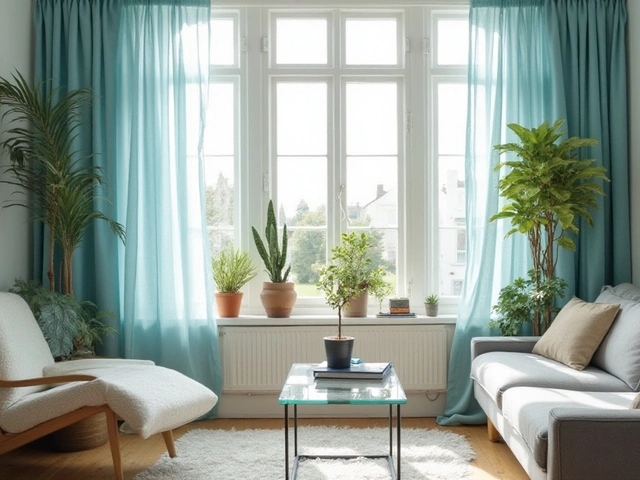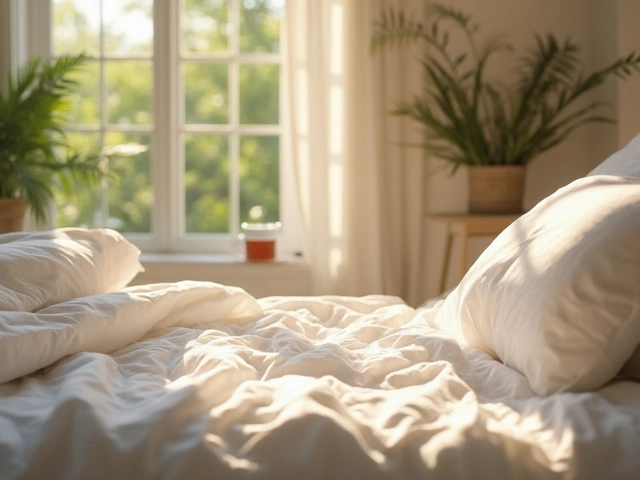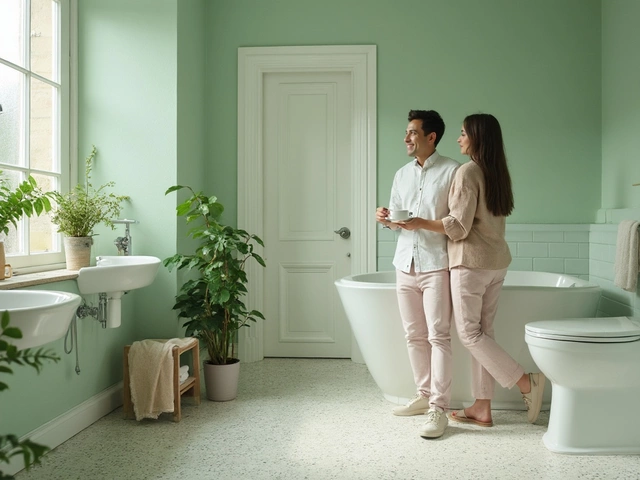Exploring the Essence of Bedding: Comfort, Style, and Functionality
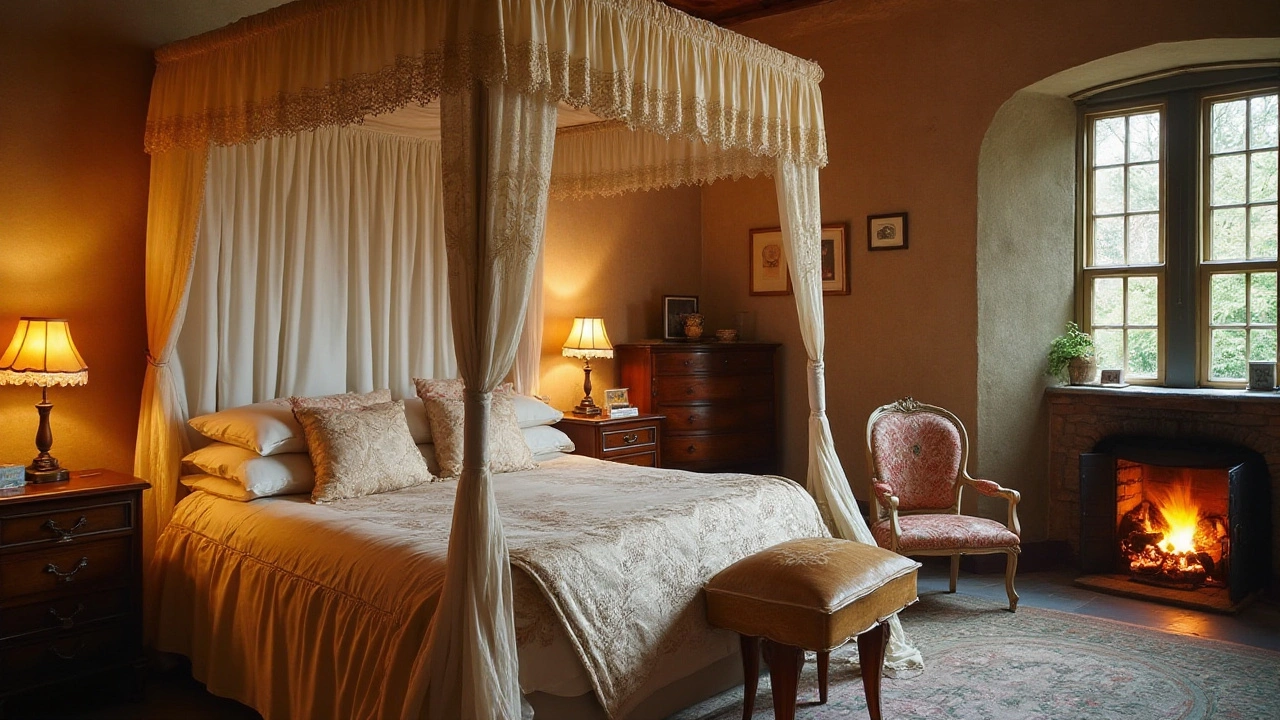
Bedding forms an essential part of your bedroom, greatly influencing both its aesthetic allure and the comfort of your nightly slumber. Whether you're slipping under silky sheets or snuggling beneath a heavy quilt, the right bedding can transform your sleep into a pleasurable retreat.
Diving into the world of bedding, we uncover a vibrant tapestry of textures, colors, and styles. It's not just about fabrics—it's about weaving together comfort, fashion, and functionality to match your personal taste and climatic needs. Are you tangled in thread counts or puzzled by the plethora of pillows? This guide seeks to untangle the threads of confusion and provide clarity.
Discover the history behind bedding, from its humble beginnings to the luxury it represents today. With helpful tips to navigate this extensive realm, you'll learn how to select pieces that best suit your lifestyle and bring joy to your daily routine. Join us as we explore the significance of bedding in creating a sanctuary in your home.
- Understanding Bedding Basics
- Types and Materials of Bedding
- The Evolution of Bedding Styles
- Selecting the Right Bedding for Comfort
- Fascinating Facts about Bedding
Understanding Bedding Basics
When diving into the world of bedding, it's important to recognize that these aren't just accessories for your sleeping space. Bedding encompasses a wide range of items, from sheets and pillowcases to duvets, comforters, and bed skirts, each playing a unique role in ensuring comfort and adding style to your bedroom. At its core, bedding serves two main purposes: providing warmth and enhancing the aesthetics of your sleeping environment. By exploring the basics of bedding, we can better understand how these various elements work together to create the perfect night's sleep.
Sheets are the foundation of any bedding set. They come in many materials, including cotton, linen, bamboo, and silk, each offering different benefits. Cotton sheets are breathable and durable, making them a popular choice. Linen, with its natural fibers, is highly breathable and gets softer with each wash. Bamboo sheets are loved for their silky feel and hypoallergenic properties, and silk is the epitome of luxury, offering a smooth, cool surface that's ideal for hot nights. Adding a layer of information, thread count is something many consider when purchasing sheets; a higher thread count generally indicates a softer sheet, though sometimes it's not the only factor of quality.
Next, we have blankets, quilts, duvets, and comforters, which play crucial roles in providing warmth and comfort. Each type of bed covering has its unique features. Blankets offer a moderate warmth level, often used year-round, while quilts are decorative and sometimes stitched in intricate patterns. Duvets, usually filled with synthetics or down materials, require an outer cover that can be swapped out to match the decor or seasons. This practicality makes duvets popular in many households. Comforters, on the other hand, are designed to be used on their own without a cover, offering convenience and a cohesive look.
Pillows and pillowcases are where comfort and style meet. The material of your pillow is as essential as the support it brings—whether you prefer feather, memory foam, latex, or a newer hybrid type, it should cater to your sleeping style. Side sleepers, for example, often need more neck support compared to back sleepers. Beyond comfort, pillowcases add a touch of softness and color to your bed, available in all sorts of materials and designs to cater to individual tastes.
Bed skirts and decorative shams offer the finishing touches to any bedding ensemble. Bed skirts hide the space beneath the bed, providing a cleaner, more polished look to your bedroom. Decorative shams, which are the fancy cousins of regular pillowcases, add layers of texture and style. These elements might seem non-essential, yet they truly complete the overall aesthetic of a bedroom, turning it from a mere sleeping area into a personal sanctuary. All these components come together to elevate bedroom decor, making your bed a focal point and a statement of personal style.
"A well-made bed is a little luxury to be savored daily," says interior designer Nathan Turner, emphasizing the importance of bedding in home comfort and decor.
Types and Materials of Bedding
When it comes to bedding, the options are as diverse as they are delightful, each offering its own unique blend of comfort and style. From sheets and pillowcases to duvets and blankets, understanding the different types and materials can elevate your sleep experience significantly. Let's start with sheets, the staple of every bed. Cotton sheets are incredibly popular thanks to their breathability and softness. There are variations within cotton, too, such as Egyptian cotton, known for its long fibers and luxury feel, and Pima cotton, which is also soft and durable. For those seeking something eco-friendly, bamboo sheets offer a silky texture and excellent moisture-wicking properties. Then there's linen, which, while rougher at first touch, softens over time and is perfect for hot weather due to its high breathability.
Moving on to blankets and duvets, materials like down fill provide unparalleled warmth and lightness, making them a fantastic choice for winter, whereas synthetic fills can be a hypoallergenic alternative. Wool blankets, an age-old favorite, are excellent for insulation, while cotton blankets offer a lighter cover for those warmer summer nights. Additionally, the tactile pleasure of a weighted blanket, often filled with glass beads, can provide soothing comfort for many. Let's not forget about bedspreads and quilts, often made from cotton and offering both functionality and a splash of color to any bedroom setting. An eye for pattern and texture can transform the bed from a mere part of the room to a statement piece.
Different types of pillows complement varied sleeping styles, often wrapped in pillowcases that match your sheet set for a cohesive look. Memory foam pillows mold to your head and neck for tailored support, a delightful innovation for those with back issues. Feather pillows, a staple in many homes, are plush and easily shapeable, while latex pillows provide a bouncier feel and natural resistance to dust mites. Then we have the pillow materials thankfully sparking little debate: synthetic fibers, an affordable and widely used option, and goose down, which offers softness but might not be the best for allergy sufferers out there.
A curious fact is how preferences for bedding materials vary across the globe. While Europeans often prefer duvets over top sheets, Americans are more inclined to layer their beds, starting with a fitted sheet, flat sheet, and capping it off with a blanket or comforter. This cultural variation extends to material choices as well; for instance, in Japan, futons that can be easily stored provide versatility in environments with limited space. Lastly, the environmental impact of bedding materials cannot be overlooked as consumers increasingly demand sustainability. Brands are responding by innovating in the textile industry, offering materials like organic cotton and recycled fabrics, appealing to the eco-conscious shopper.
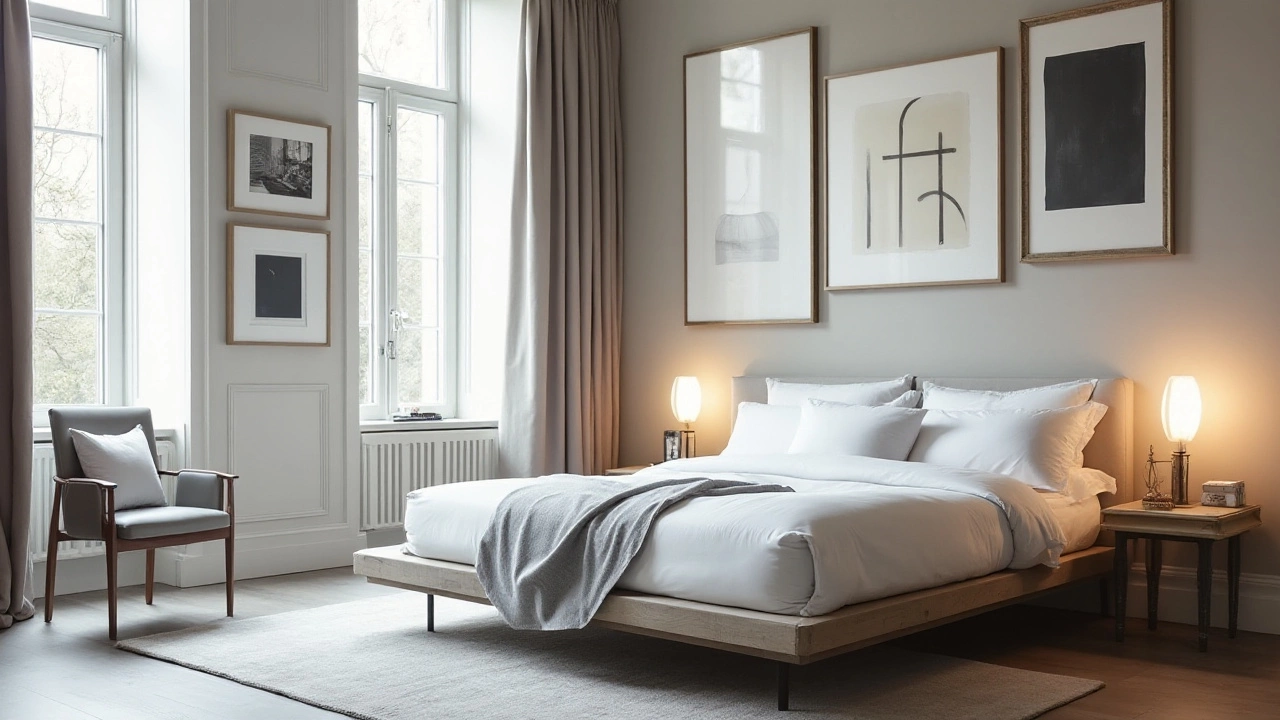
The Evolution of Bedding Styles
Bedding, as we know it today, has traveled a fascinating journey through time, mirroring changes in society, technology, and style. Back in ancient times, bedding was a symbol of status and wealth. Egyptian pharaohs lavished themselves with linen woven from the finest flax, while the Romans indulged in bedding made from wool, feathers, and sometimes even straw. The texture of your sheets held significant social weight, speaking volumes about one's place in the social hierarchy.
In medieval Europe, bedding took a different turn as the four-poster bed became a staple, often layered with drapes to provide warmth and privacy in the chilly stone-walled abodes. As trade routes expanded, so did the variety of textiles available. The Renaissance era embraced opulence, with silk and velvet gracing the beds of nobility. This period marked a shift toward not just utility but also luxury and design in bedroom decor.
The Industrial Revolution and Its Impact
The Industrial Revolution dramatically shifted the landscape of bedding styles. Mass production meant that textiles, once reserved for the elite, became accessible to the common folk. Cotton sheets became widespread, admired for their comfort and affordability. With the advent of new textile technologies, thread counts soared, and the comfort of bedding improved significantly. This era marked the democratization of quality bedding, making it possible for more people to enjoy a comfortable night’s sleep without extravagant expense.
"Bedding reflects both the social and technological advances of its time," notes historian Judith Flanders. "From the plush silks of the past to today's hypoallergenic fills, our pursuit of a better night's rest is timeless."
Modern Times: A Fusion of Functionality and Fashion
In contemporary times, bedding has evolved into an art form that balances both fashion and functionality. Designers now focus on sustainability, introducing organic and eco-friendly materials. The trend towards minimalism has also influenced bedding, where neutral tones and simplistic designs create serene, restful environments. There's an increasing awareness of the health benefits related to sleep, and as such, bedding now often incorporates technology to enhance comfort, like temperature-regulating fabrics and allergen-resistant materials.
This cultural evolution continues to inform and inspire personal choices in our own homes. As we look to the future, the story of bedding remains a story of innovation and adaptation, as each generation reimagines how to balance style and comfort in their sacred spaces.
Selecting the Right Bedding for Comfort
When it comes to choosing the perfect bedding, comfort should be your top priority. Although it may seem simple, selecting bedding involves a deep dive into textures, materials, and your own personal preferences. Different materials offer unique advantages and potential setbacks, making it crucial to understand their properties. Cotton remains one of the most popular choices due to its breathable nature, providing natural ventilation that regulates your body temperature as you sleep. Over 50% of bedding sold worldwide is made from cotton, thanks to its ability to balance warmth and airflow efficiently, making it suitable for almost any climate.
Understanding Bedding Materials
Perhaps you fancy the silky smooth feel of satin or the cozy warmth of flannel. Satin is known for its sheen and luxurious feel, making it a favorite for those who relish opulence. Though it can be refreshing during warmer months, it might not be the ideal choice in cooler climates since it lacks insulation properties. Flannel, on the other hand, offers a plush, warm experience, ideal for cold winter months. Its texture traps heat in a way that's unmatched by other materials, creating a warm cocoon effect. Preference plays a massive role, but considering your local climate can steer you in the right direction, helping you make a choice that offers year-round comfort.
Exploring Bedding Styles and Designs
Once you’ve settled on a material, the next step is to reflect your personality through your bedding style. The world of bedroom decor has broadened with vibrant colors, patterns, and designs, making it easier than ever to find something that matches your interior sense. Whether you're drawn to serene, neutral palettes or bold, expressive patterns, the print you choose can dramatically influence your bedroom's atmosphere. Some prefer minimalistic designs; others find joy in floral or geometric patterns. The choice should resonate with your personal style and create a sanctuary that you feel comfortable returning to night after night.
"A well-made bed offers the best start to the day and the most inviting finish. It’s important to invest in bedding that matches both your comfort needs and aesthetic desires," says Marie Kondo, famous organizing consultant.
Quality and Longevity: A Worthy Investment
Choosing quality bed linen is more than a fleeting purchase; it is an investment in your nightly rest and overall wellbeing. High-quality bedding can lead to more rejuvenating sleep, which is integral to maintaining a healthy life. It’s interesting to note that Egyptian cotton, revered for its long, silky fibers, typically lasts 10 to 15 years when properly maintained, far exceeding the lifespan of other fabrics. Regular washing and proper care can preserve the quality of your sheets and help you keep them looking and feeling fresh longer. Adequate investment in bedding ensures not just immediate comfort but lasting satisfaction.

Fascinating Facts about Bedding
When we slip into bed at the end of the day, it's a simple comfort we often take for granted. Yet, the history of bedding offers a window into human progress and cultural nuances. Did you know that the first beds from ancient Egypt weren't for mere mortals, but for pharaohs and high-ranking officials? These beds were often elevated, not just for comfort but to avoid pests, pointing towards the practical origins of what we now consider luxury style. As civilizations advanced, so did the concept of bedding. Romans were one of the pioneers in using wool cushions and was among the first to fill mattresses with feathers. Such innovations in bed fabrics marked a shift from functional to the lavish, indicative of the growing appreciation for personal comfort in daily life.
Fast forward to the medieval times, when bedding became a clear marker of status. Noble families showcased their wealth through intricately embroidered linens and furs, often reserving their grandest pieces for special visits and royal guests. This tradition of impressing through bedroom decor might resonate today, as people carefully choose stylish bedroom decor to reflect personal taste. According to a 2019 survey, individuals spend an average of three years of their life making the bed, highlighting its importance in daily routine.
Modern times have made bedding not just a question of aesthetics but also technology and health. One fascinating development is hypoallergenic blankets and pillowcases that cater to sensitive skin and allergy sufferers, an innovation that speaks of how versatile bed linen has become. Cutting-edge designs now incorporate eco-friendly fabrics, blending sustainability with comfort. In fact, a study found that 75% of consumers consider a brand’s sustainability record before purchasing bedding. Some manufacturers are now experimenting with ‘smart bedding’ that regulates temperature through micro-climate technology, adjusting based on your body's heat during the night.
On a global scale, cultural differences paint a rich tapestry in how bedtime essentials are perceived and utilized. In Japan, futons originated not only from space constraints but also from cultural practices of neatness and simplicity. The concept of transforming living rooms into bedrooms every night is foreign to many but is an ingenious use of limited space. In Scandinavia, sleep specialists promote the idea of using two separate duvets in larger beds to enhance personal comfort and prevent the infamous ‘cover stealing’ while sleeping. Such practices shed light on how cultural nuances shape our sleeping habits and preferences, making bedding a reflection of both personal and cultural identity.
Oscar Wilde once stated, "To live is the rarest thing in the world; most people exist, that is all." His sentiment about life’s finer pleasures could easily apply to our choice of bed linens. Picking sheets and blankets isn't just about utility; it's an opportunity to infuse a bit of artistry and individuality into our lives. These historical and cultural insights into bedding reveal much more than just facts; they unveil the evolution of human comfort and creativity across different eras and societies. Understanding these subtleties not only enriches our appreciation for our nightly refuge but also encourages thoughtful choices that contribute to a more restful and rewarding sleep experience.

